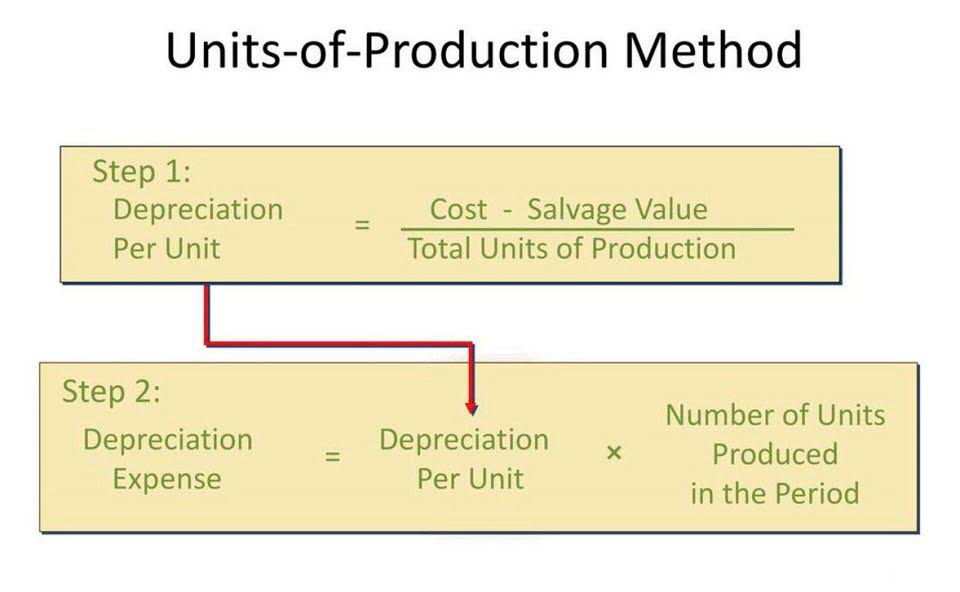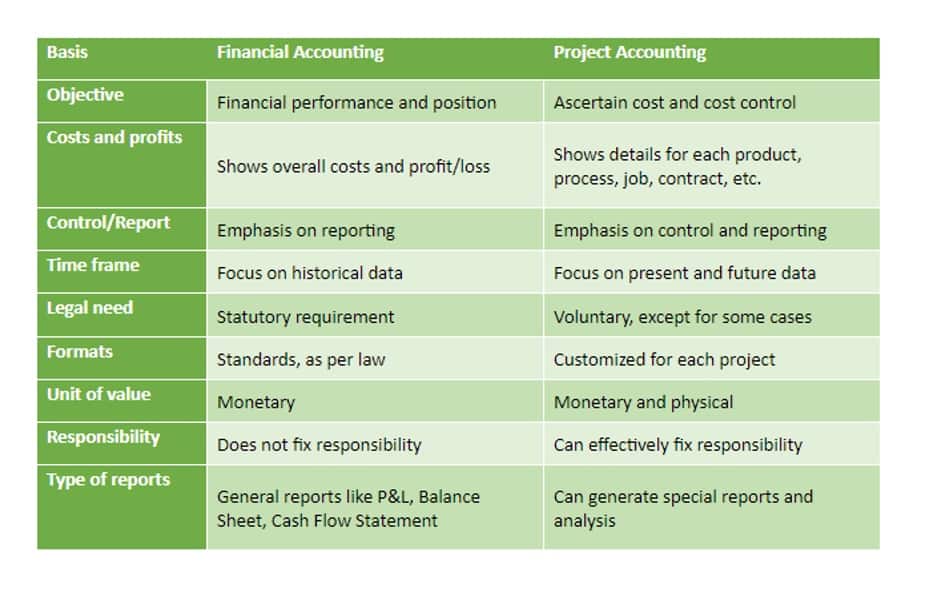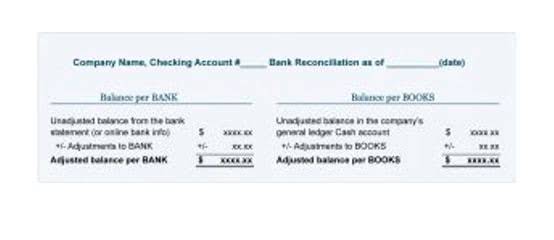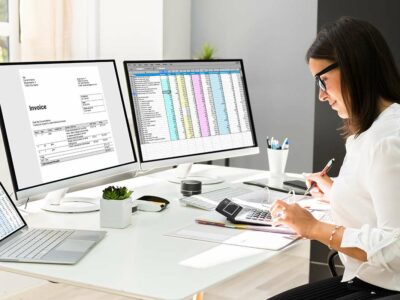
Let’s look at how virtual bookkeeping works, then figure out whether it’s a good fit for your business. Selecting the right virtual assistant for accounting/bookkeeping means finding someone who aligns with your business in skill, communication, security, and culture. A bookkeeper virtual assistant skilled in these areas ensures smooth operations.
- Working remotely can be equally or even more collaborative and efficient if you use the right tools that can help with automation and project management.
- Invoicing services help businesses generate and send professional invoices to clients, facilitating timely payments and cash flow management.
- If you actually want someone who can do more of an accountant’s type of work, you could be looking at $50 or more per hour.
- This also means that businesses can easily share their up-to-date financial data with accountants or virtual accounting services.
Formal document management tools are often expensive, but some financial automation tools include unlimited cloud storage along with the ability to connect those documents to client or vendor records. Bill pay software can automate the accounts payable (AP) process, streamlining the way companies receive, approve, and pay invoices. Digital invoices, approvals, and payment let bookkeepers work from anywhere, communicating with their clients and managing their accounts payable remotely. Whether a virtual bookkeeper is internal or external, an automation platform like Bill.com makes it even easier to delegate these financial tasks.
Best Accounting Software for Small Businesses
The bookkeeper signs onto the company’s secure network from his home or office computer and retrieve documents just as he would if logged onto an on-site company computer. Bookkeepers around the world might also use cloud-based accounting software such as Quickbooks Online or access a hosted virtual desktop, according to Bookkeepers.com. The rise of cloud-based accounting software and virtual accounting services has made it possible what is virtual bookkeeping for small businesses to enjoy the same benefits as large corporations when it comes to bookkeeping. Ultimately, virtual bookkeeping services offer convenience and efficiency for any business looking to streamline its financial processes. By utilizing online bookkeeping services, companies can save on overhead costs and have access to certified bookkeepers with up-to-date knowledge of the latest technology and practices.
- However, you still need to decide how you’ll fund your business before you get started.
- Deciding what services you want to provide helps you understand what employees you will need to hire, what software you will need to implement, and the overall feasibility of your business plan.
- Our partners cannot pay us to guarantee favorable reviews of their products or services.
- For startups that have a lot of customers or a lot of bills, virtual bookkeepers can save many hours every month.
- Personal preference plays a role here — while one entrepreneur might love a bookkeeper’s enthusiastic email communication, another might prefer brief, direct notes.
- Tracking productivity is something that many remote companies struggle with, and excellent project management software is the key to ensuring work is getting done by your employees.
Businesses must integrate these assistants into existing processes, keep data safe remotely, and clear communication hurdles. Addressing these issues means setting up strong security measures, picking the right communication and project management tools, and clarifying how workflows incorporate these assistants. Tackling these challenges head-on helps businesses move smoothly to virtual assistant services and keeps their finances running smoothly. Virtual assistants specializing in bookkeeping and accounting manage financial records, reports, and transactions remotely.
What is Virtual Bookkeeping?
This way you don’t have to rely on the claims they make about what they can do for you. If they are offering advice that others find useful, then you will be able to see that rather than simply taking their word for it. If your prospective virtual bookkeeping service understands the value of adding to the conversation, then it is a good sign that they will be genuinely helpful to your business.
To hire a bookkeeper for your small business, narrow the pool of options to those who use reputable accounting software. Bookkeepers often specialize or are certified in using specific software programs. Search for local or virtual bookkeepers who know how to navigate trusted technology.
Bookkeeping service software
One of the biggest benefits of virtual bookkeeping is helping companies save a ton of time and money versus hiring an in-house bookkeeper. Virtual bookkeeping is especially helpful if your business mostly deals with digital transactions rather than cash. While a virtual bookkeeper can handle cash transactions, it’s faster and easier for them to categorize digital transactions (like credit card, debit, Shopify, and Paypal transactions). Virtual bookkeeping and accounting services can take bookkeeping tasks off your hands for good.


Our team of reviewers are established professionals with years of experience in areas of personal finance and climate. Carbon Collective partners with financial and climate experts to ensure the accuracy of our content. The articles and research support materials available on this site are educational and are not intended to be investment or tax advice. All such information is provided solely for convenience purposes only and all users thereof should be guided accordingly. For information pertaining to the registration status of 11 Financial, please contact the state securities regulators for those states in which 11 Financial maintains a registration filing.
What is Accounts Receivable Collection Period? (Definition, Formula, and Example)

The opposite of the revenue contra accounts Sales Discounts, Returns and Allowances are expense contra accounts Purchase Discounts, Returns and Allowances. However, if a company has not been prompt in paying their suppliers, then offering sales discounts can help alleviate the situation because now both parties are being treated equally. Sales discounts may induce a company to encourage prompt payment from its customers. The sooner a company receives cash after providing a good or service, the better off it is financially. An example of a sales discount is when a buyer is entitled to a 1% discount in exchange for paying within 10 days of the invoice date, rather than the normal 30 days. Hence, the term valuation account represents all types of balance sheet accounts related to their corresponding balance sheet accounts.

Would you prefer to work with a financial professional remotely or in-person?
A delivery van is purchased by a business to use in delivering product and picking up materials. The company uses Straight-Line Depreciation to track the loss of value of the asset over time. To illustrate a sales discount let’s assume that a manufacturer sells $900 of products and its credit terms are 1/10, n/30.
Double Entry Bookkeeping
Sales Returns contra revenue account records the value of a sales deduction attributable to goods returned by buyers in exchange for a refund. However, even though sales discounts are considered a type of promotion to encourage the early collection of debts from customers, companies should still be cautious in implementing it because in a way it decreases their revenue and net income. For example, an asset was purchased by a company for $100,000 – that is, the historical cost of the asset was $100,000 – and its contra asset counterpart has a balance of $30,000. Note that the asset account balance represents the purchase price of the asset in question, also known as its historical cost.
Better yet, consider investing in AI-powered accounting software to reduce mistakes. The sales allowances account contains either an allowance for reductions in the price of a product that has minor defects, or the actual amount of the allowance attributable to specific sales. A contra account enables a company to report the original amount while also reporting the appropriate downward adjustment. Accounting software can simplify the management of and reporting from your ledger. With the appropriate level of automation integration in your chosen tool, you can pull the relevant values into these individual accounts directly from invoices, credit agreements, and other documentation.
List of Contra Accounts
Contra liability, equity, and revenue accounts have natural debit balances. These three types of contra accounts are used to reduce liabilities, equity, and revenue which all have natural credit balances. Therefore, for these three, the debit balance actually represents a negative amount. When a contra asset account is first recorded in a journal entry, the offset is to an expense.

Get instant access to video lessons taught by experienced investment bankers. Suppose the XYZ company recorded only one invoice in their accounting period. A Cash contra expense account or Sales discount is the reduction in the price of a product or service offered to a customer by the seller to pay the due amount within a specified time period.
Create a Free Account and Ask Any Financial Question
For example, an increase in the form of a credit to allowance for doubtful accounts is also recorded as a debit to increase bad debt expense. The most common contra type, contra assets, records the loss in value of any asset accounts listed in your general ledger. And by comparing these contras against their corresponding parent accounts, you can better understand the actual value of the assets retained by your business. Because contra asset accounts are used so frequently, it’s worth spending a little bit more time on them here, including common subtypes. A contra asset account is an asset account where the account balance is a credit balance. It is described as “contra” because having a credit balance in an asset account is contrary to the normal or expected debit balance.
- In other words, accumulated depreciation will be $10,000 each year until the car depreciates to $0 twenty years later.
- While it is acceptable to record and report discounts, returns and allowances within the sales revenue account–especially for very small businesses–doing so leads to the loss of valuable information and insights.
- You may use accounting software packages, such as QuickBooks Online to set up contra accounts.
- The most common contra type, contra assets, records the loss in value of any asset accounts listed in your general ledger.
- The allowance for doubtful accounts – often called a “bad debt reserve” – would be considered a contra asset since it causes the accounts receivable (A/R) balance to decline.

On a business trip, you can deduct 100% of the cost of travel to your destination, whether that’s a plane, train, or bus ticket. If you rent a car to get there, and to get around, that cost is deductible, too. For example, say you’ve rent a room or a studio travel agency accounting apartment in Prague for the year. But Prague is your tax home, so you can write off travel expenses. You must use a sign language interpreter during meetings while you are at work. You can deduct your expenses for the interpreter as business expenses.
- Since most agents are constantly driving to and from listing appointments, showings, and open houses, it’s important to track and deduct transportation costs like mileage and fuel for your personal vehicle.
- Donations may include cash gifts and donations of goods or services.
- You can use either of the following methods to figure the federal M&IE for that day.
- If you rent a car to get there, and to get around, that cost is deductible, too.
- You can’t deduct these expenses even if you have to maintain a home in the United States for your family members who aren’t allowed to accompany you overseas.
- None of your travel expenses for nonbusiness activities at, near, or beyond your business destination are deductible.
State and Local Taxes
A baseball fanatic, you decide to go to Japan for the Japan Series. While you’re there, you bring work with you and spend three hours per day booking trips and supporting your traveling clients. The rest of the time, you watch baseball and explore Japan. If your niche is Italy, it’s going to be tough to write off a trip to Hawaii if you’ve never booked that destination (and don’t plan on doing it any time soon). I can’t advise you on your taxes (trust me, everyone loses in this scenario).

Pay your team
- Each separate payment is generally considered a separate expense.
- From 2018 through 2023, you used the standard mileage rate to figure your car expense deduction.
- You alternate using your two cars for the insurance business.
- Your trip must be entirely business-related for you to take deductions for travel costs if you remain in the U.S., but some “incidental” personal time is okay.
- In addition, you can deduct your expenses of returning home up to the amount you would have spent for meals had you stayed at your temporary place of work.
Putting display material that advertises your business on your car doesn’t change the use of your car from personal use to business use. If you use this car for commuting or other personal uses, you still can’t deduct your expenses for those uses. If you are self-employed, your deductible meal expenses aren’t subject to the 50% limit if all of the following requirements are met. You spend $200 (including tax and tip) for a business meal. If $110 of that amount isn’t allowable because it is lavish and extravagant, the remaining $90 is subject to the 50% limit. Also assume that the taxpayer and the business contact are not engaged in a trade or business that has any relation to the entertainment activity.

Pro Tips on Tracking & Documenting Your Business Travel Expenses
Her areas of expertise are business, law, gaming, home renovations, gardening, sports and exercise. Aloun Khountham is a freelance real estate contributor to The Close. Her real estate experience stems from over five years as a New York City real estate operations executive for a growing brokerage. All features, services, support, prices, offers, terms and conditions are subject to change without notice.
Employees who give their records and documentation to their employers and are reimbursed for their expenses generally don’t have to keep copies of this information. However, you may have to prove your expenses if any of the following conditions apply. You must keep records of the business use of your car for each year of the recovery period.
Tax Write-Off for Meals for Employees
For example, you must allocate your expenses if a hotel includes one or more meals in its room charge. If you (and your family) don’t live at your tax home (defined earlier), you can’t deduct the cost of traveling between your tax home and your family home. You also can’t deduct the cost of meals and lodging while at your tax home. The 100% deduction on certain business meals expenses as amended under the Taxpayer Certainty and Disaster Tax Relief Act of 2020, and enacted by the Consolidated Appropriations Act, 2021, has expired.
Rules for business travel
The more organized you are, the more deductions you can claim and the faster you can file. If you are an employee with a physical or mental disability, your impairment-related work expenses aren’t subject to the 2%-of-adjusted-gross-income limit that applies to most other employee business expenses. After you complete Form 2106, enter your impairment-related work expenses from Form 2106, line 10, on Schedule A (Form 1040), line 16, and identify the type and amount of this expense on the line next to line 16. Your employee business expenses may be subject to either of the limits described next. They are figured in the following order on the specified form.
Real Estate License & Dues

In cases where no return was filed, indefinitely keeping records is recommended. This allowance is based on the federal meals and incidental expense per diem rate that depends on where and when you travel. Well-organized records make it easier to prepare a tax return. Keep records, such as receipts, canceled checks, and other documents that support a deduction.
Are Sewer Charges Tax Deductible for Businesses?

The rates listed for FY2023 at GSA.gov/travel/plan-book/per-diem-rates are effective October 1, 2022, and those listed for FY2024 are effective October 1, 2023. The standard rate for all locations within CONUS not specifically listed for FY2023 is $157 ($98 for lodging and $59 for M&IE). For FY2024, this rate increases to $166 ($107 for lodging and $59 for M&IE). Your employer gives you $1,000 a month ($12,000 total for the year) for your business expenses. You don’t have to provide any proof of your expenses to your employer, and you can keep any funds that you don’t spend. If you aren’t sure if the reimbursement or expense allowance arrangement is an accountable or nonaccountable plan, ask your employer.
- In Baltimore, you eat in restaurants and sleep in a rooming house.
- Generally, your employer must include the value of the use or availability of the vehicle in your income.
- Generally, you can use the “standard meal allowance” method as an alternative to the actual cost method.
- Over time, small write-offs and unexpected deductions lead to huge savings.
- Regulations section 1.168(i)-6 doesn’t reflect this change in law.
- Your employer should tell you what method of reimbursement is used and what records you must provide.
- Travel by private car in the United States is travel between points in the United States, even though you are on your way to a destination outside the United States.
Family/friends/dependents traveling with you
It’s also important to track your mileage if you use the car for personal and business purposes and use the actual cost method. The money you spend for filing your business tax return with the help of tax preparation software can be counted as a business expense as well. The preparation of your personal tax return as a sole proprietor is not deductible.
]]>
Accounts like Cash, Equipment, and Inventory have a debit balance. Understanding this is important for showing their value on the balance sheet. Then we translate these increase or decrease effects into debits and credits.

Analyzing Account Balances for Accuracy
Always make sure to account for uncleared bank checks and other factors. Sign up for accounting software to easily create and manage your opening balance equity account here. Equity in accounting comes from subtracting liabilities from a company’s assets.
Equity on the Balance Sheet
Normalizing entries are typically made at the end of an accounting period to ensure that the financial statements accurately represent the business’s ongoing operations. These adjustments help remove distortions caused by extraordinary or non-recurring events, allowing for a more meaningful analysis of the business’s financial performance and trends. Next, let’s explore the relationship between normal balances and the categories of assets, liabilities, and equity in accounting.
- You can use the Excel file to enter the numbers for any company and gain a deeper understanding of how balance sheets work.
- These procedures may include trend analysis, ratio analysis, and other financial diagnostics that compare current data with historical figures, budgeted amounts, or industry standards.
- This account includes the amortized amount of any bonds the company has issued.
- The terms originated from the Latin terms “debere” or “debitum” which means “what is due”, and “credere” or “creditum” which means “something entrusted or loaned”.
- For example, an investor starts a company and seeds it with $10M.
Normal Balance of Accounts

Knowing the normal balance of an account helps maintain accurate financial records, prepare financial statements, and identify errors in the accounting system. Asset accounts represent the resources owned by a company that have economic value and can provide future benefits. These include current assets such as cash, inventory, and accounts receivable, as well as fixed assets like property, plant, and equipment. In double-entry bookkeeping, asset accounts typically carry a debit balance.
You can use the Excel file to enter the numbers for any company and gain a deeper understanding of how balance sheets work. Ideally, yes, your opening balance equity should be at zero. If it is not, this means an unbalanced or unaccounted-for entry in your balance sheet needs to be looked at closer. Ensuring all finances are accounted for will make filing your income taxes much easier. Maintain professional balance sheets and simplify accounting reports with FreshBooks.
- Meanwhile, liabilities, equity, and revenues should be Credit.
- When an account has a balance that is opposite the expected normal balance of that account, the account is said to have an abnormal balance.
- Now that we have defined the concept of normal balance, let’s move on to examining some examples to further clarify its application.
- This means they might have to give the other investors a say in decisions about how to run the business.
- On the other hand, the accounts payable account will usually have a negative balance.
What is the significance of normal balances in maintaining accurate financial records?
This means that when you make a debit entry to an asset account. While a debit balance occurs when the debits exceed the credits. Ed’s inventory would have an ending debit balance of $38,000. Accounts Payables, or AP, is the amount a company owes suppliers for items or services purchased on credit. As the company pays off its AP, it decreases along with an equal amount decrease to the cash account. Enter your name and email in the form below and download the free template now!

Understand the concept of normal balance in accounting and its significance in finance. Explore how it affects financial statements and reporting accuracy. Retained earnings reflect a company’s total equity normal balance profits after dividends. They show a credit normal balance for retained earnings because they are part of equity. On the other hand, a credit entry often means more liabilities, equity, or income.
Wrapping Up: The Normal Balance of an Accounts

What Is Considered Equity in Accounting?


The first three are assets, liabilities, and equity, which flow into the balance sheet. The remaining two are income or revenue and expenses, which flow into the income statement. Some businesses also include capital and financial statement categories. You may also wish to break down your business’ COA according to product line, company division, or business function, depending on your unique needs. If you’ve worked on a general ledger before, you’ll notice the accounts for the ledger are the same as the ones found in a chart of accounts.Keeping your books organized does not need to be a chore. Many small businesses opt to utilize online bookkeeping services, not only for invoicing and expense tracking but also for organizing accounts and ensuring tax season goes smoothly.
- On a cash basis, you only record transactions when money changes hands.
- What does this question mean ‘Do you want to see your account statement?
- The figures in your reports will look different depending on whether you use cash or accrual basis accounting.
- Before you can share the great news with your customers that they’re being promoted to key account status, you need to level-set expectations internally and externally.
- PV offers a method for adjusting future revenues, expenses, and debts for inflation.
Money without borders
The IRS outlines these different business taxes as income, excise, employment, and self-employment taxes. All businesses pay income tax unless the company is considered a partnership. Small businesses would not have to pay self-employment tax since it’s an organization with employees, but the company will have to pay employment taxes. In many small businesses, a payroll manager is in charge of oversight of the payroll.
A simple definition of accounting

The financial statements must show corresponding information for the preceding year(s) so that the users may be able to compare the financial performance, position and cash flows of different years. The measurement and display of the net financial effects of similar type of transactions must be treated in a consistent form. Accounting is the medium of recording business activities and it is considered a language of business. Preparing the company’s annual financial statements this way is called financial accounting.
Accountant vs. CPA vs. Tax Pro
Interested parties like owners, creditors, management, employees, customers, government, etc. are interested in accounting information. Accounting is very useful in the determination of the profit and loss of a business and showing the financial position of the business. The Government is interested in the financial statements of business enterprise on account of taxation, labour and corporate laws.
Revenue and expense accounts are technically both temporary equity accounts, but they are significant enough to mention separately. Equity is often called net assets because it shows the amount of assets that the owners actually own after the creditors have been paid off. You can calculate this by flipping the accounting equation around to solve for equity instead of assets. Most business accounts charge fees for registration or continued use. Some fees are triggered if you drop below a minimum balance, while other fees can be charged on an ongoing basis.
- The supplier has also increased the balance in its current asset account entitled Accounts Receivable and the customer will increase the balance in its current liability account entitled Accounts Payable.
- Whether you’re selling physical products like clothing and accessories, or a pioneer of a new software-as-a-service, you want to have a sure way to deliver those products to your key accounts consistently.
- Even for small businesses, a business account can help ensure compliance with the Internal Revenue Service (IRS) and simplify tax filing.
- Courting them now will earn you their loyalty before any other company in the space.
- Tax accounting is designed to make sure that you don’t pay more income tax than you are legally required to by the IRS.
Key Social Selling Tips, According to Experts

Without clear direction, your team will go off in a thousand directions. Plus, you can continuously adapt your strategy down the line if something changes. A key account plan helps you identify the most significant account meaning in business possibilities for growth, potential roadblocks, threats from the competition, and more. Key account managers are responsible for keeping clients and other stakeholders updated about any issues.
What Are the Responsibilities of an Accountant?
For example, a company has to reference specific time periods in reports and follow the same accounting method across time periods to ensure accurate comparisons. Though small businesses aren’t required to follow the same rules, doing so can help ensure a higher level of consistency. You can choose to manage your business accounting by hiring an in-house accountant or CPA.
- Analysis and Interpretation The financial information or data as recorded in the books of an account must further be analyzed and interpreted so to draw useful conclusions.
- For one thing, the cost of hiring someone like this can be a substantial burden on your business’s finances.
- This content has been made available for informational purposes only.
- Many small businesses use a cloud-based inventory management system that provides real-time data when needed.
- Account statements are typically delivered in PDF format through email, listing all invoice amounts, payments received, and refunds from the vendor.
- The reports generated by various streams of accounting, such as cost accounting and managerial accounting, are invaluable in helping management make informed business decisions.
- With this type of account, you can pay employee wages and satisfy payroll tax liabilities.
It tells you whether or not you’re making a profit, what your cash flow is, what the current value of your company’s assets and liabilities is, and which parts of your business are actually making money. Keeping an updated COA on hand will provide a good overview of your business’s financial health in a sharable format you can send to potential investors and shareholders. Income statements are one of three standard financial statements issued by businesses. Many small businesses use software like QuickBooks to log and track income and expenses. The purpose of managing revenue, costs, and expenses are so that it’s easy to see how much the business earns and how to adjust if needed.

Thus the balance sheet prepared on the basis of historical cost ignores the price-level changes (inflation). In this way, the balance sheet of the business does not present the true and fair picture of the business. The debit and credit rules are applied correctly when the type of account is accurately identified. By doing this, all financial events of a business are accurately recorded and accounted for. As a result, in the light of the accounting equation, debits are always equal to credits and the balance sheet is always a match. When a larger organization issues financial statements, it will include its accounting policies, like how expenses are accrued, how assets are capitalized, etc.
Why Is Accounting Important for Investors?
Accounting is by far one of the most important and prevalent fields in the world today. Its use in organizing business transactions and meeting regulatory requirements makes it a field that requires extensive knowledge and study. As such, accountants make strong salaries and work in a variety of industries. Generally speaking, however, attention to detail is a key component in accountancy, since accountants must be able to diagnose and correct subtle errors or discrepancies in a company’s accounts.
]]>